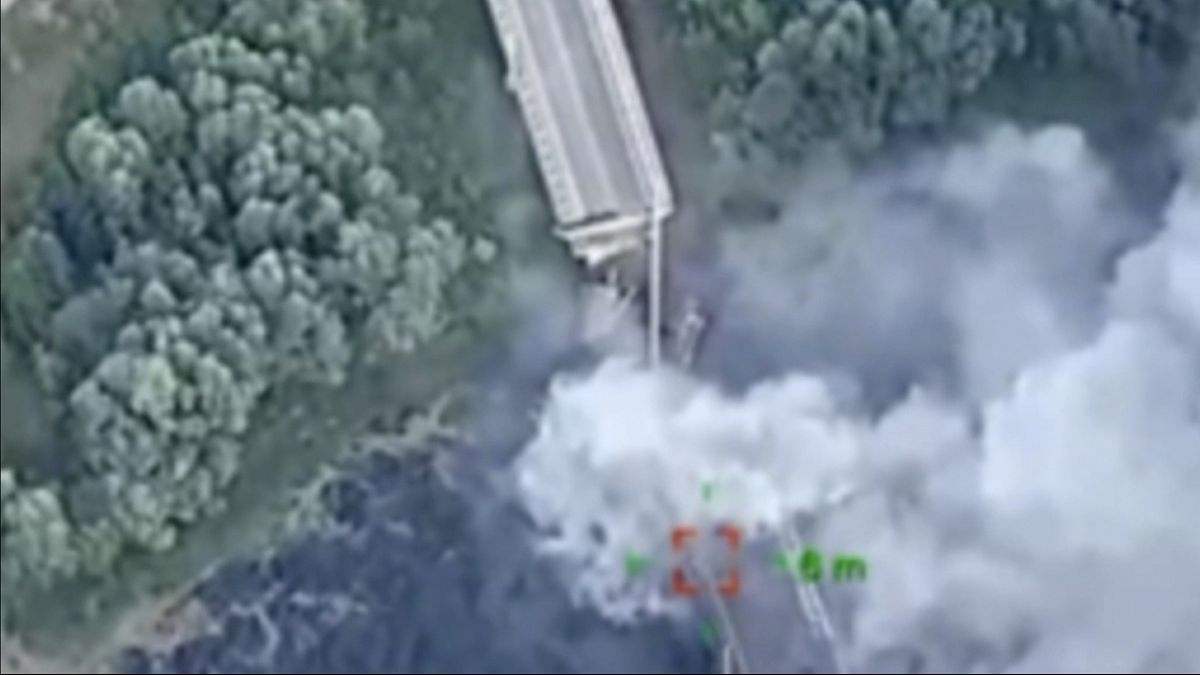The destruction of the final bridge over the Seym river in Russia’s Kursk region by Ukrainian forces threatens to impede Moscow’s ability to supply and reinforce troops in a 700 square kilometre area of Russian territory. This comes after Ukrainian forces damaged two other bridges in the region, leaving Russian units on the southern side of the river reliant on vulnerable pontoon bridges for transportation of supplies and reinforcements. In response to the incursion into Kursk, Russian forces have redeployed over 5,000 personnel in an effort to counteract Ukrainian troops, who have made significant advances in the region. Ukrainian President Volodymyr Zelenskyy indicated that the military action in Kursk was aimed at creating a buffer zone to prevent attacks from Moscow across the border. The ongoing conflict represents the largest attack on Russia since World War II, with Ukraine making significant territorial gains with minimal resistance.
The ongoing offensive in the Kursk region by Ukrainian forces has the potential to generate momentum for Ukraine, according to analysts at the Washington-based think tank The Institute for the Study of War (ISW). The incursion has forced Russia to redeploy forces from other areas, requiring additional manpower and supplies to be committed to the conflict in Kursk. General Oleksandr Syrskyi, Ukraine’s Commander in Chief, claimed that Ukrainian forces had advanced across 1,000 square kilometres in the region, although the extent of their control is difficult to verify independently. The destruction of key infrastructure such as bridges in the region has significantly hindered Russian forces’ ability to maneuver and resupply, putting additional pressure on Moscow to respond effectively to the Ukrainian offensive.
The destruction of the final bridge over the Seym river in the Kursk region underscores the strategic significance of infrastructure in modern warfare. Bridges serve as crucial chokepoints that can determine the flow of supplies and reinforcements to military units, and their destruction can severely hamper the operational capabilities of opposing forces. The reliance on pontoon bridges by Russian units highlights the vulnerability of such temporary structures to enemy attacks, underscoring the importance of securing key infrastructure in military operations. The loss of the final major crossing in the region presents a logistical challenge for Russian forces, necessitating alternative routes for the transportation of personnel and supplies as they contend with Ukrainian advances in the area.
The ongoing conflict in the Kursk region represents a significant challenge for Russian forces, who must now contend with a determined Ukrainian offensive that has caught Moscow off guard. The unexpected nature of the incursion highlights the fluid and rapidly changing nature of modern warfare, where strategic surprises can tip the balance of power in favor of the aggressor. Ukrainian President Volodymyr Zelenskyy’s assertion that the military action in Kursk aims to create a buffer zone against potential Russian attacks underscores the defensive motives behind the offensive, as Ukraine seeks to safeguard its territorial integrity and prevent further aggression from Moscow. As the conflict continues to unfold, both sides will need to adapt their strategies and tactics to contend with the evolving dynamics on the ground, as the fate of the Kursk region hangs in the balance.
The destruction of key infrastructure such as bridges in the Kursk region represents a tactical victory for Ukrainian forces, who have successfully disrupted Russian supply lines and hindered the movement of reinforcements in the area. The strategic implications of targeting critical infrastructure underscore the importance of controlling key chokepoints in modern warfare, as disruption of enemy logistics can weaken their operational capabilities and create vulnerabilities to exploitation. The continued pressure on Russian forces to respond effectively to the Ukrainian offensive highlights the challenges faced by Moscow in containing the incursion and restoring its control over the region. As the conflict intensifies, both sides will need to navigate a complex and fluid battlefield where rapid decision-making and adaptability will be key to achieving their objectives in the high-stakes struggle for control over the Kursk region.











